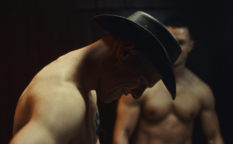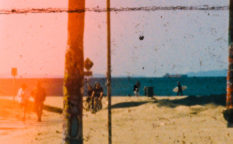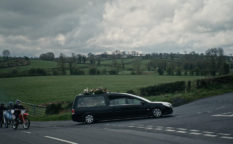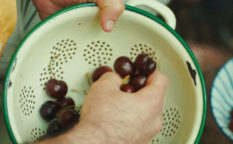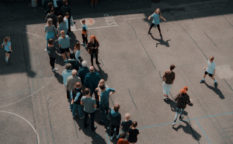Olivia Rochette & Gerard-Jan Claes: “Documentaries are also a form of fiction”
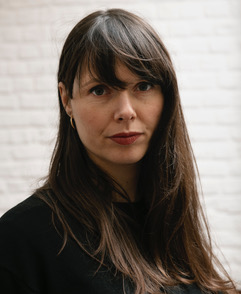
Olivia Rochette © Avila 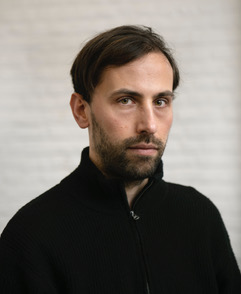
Gerard-Jan Claes © Avila
Olivia Rochette & Gerard-Jan Claes are at the Berlinale with their latest documentary Kind Hearts which screens in the Generation 14+ program. The film follows Billie and Lucas, a young Brussels couple at the brink of significant life changes. As they both get ready to leave their homes to study , they start to wonder what this change would mean for their future as a couple and they start discovering big differences in life expectations.
We sat down with both directors to talk about their approach to documentary filmmaking, to their numerous joint projects and of course about the two young protagonists of their film – Billie and Lucas.
You’ve been collaborating together ever since the film academy. How does that work, concerning that each individual have their own creative process?
Gerard-Jan Claes: It is something that in our case grew organically. We went to the film school together and started working together there. Quickly we found our own way of collaborating, and I don’t mean something like ‘method’, but more as a system. We even graduated together with one film. I think that there is for sure one certain complementary notion to it. Olivia is of course the cinematographer, so she makes the images. I would say that she is more pragmatic than me and I am maybe a bit more of a cerebral person. I don’t know how to describe it better than simply saying that some couples might work in stereo, but the two of us are quite mono. We strangely always have the same ideas about a film we are working on.
Olivia Rochette: But we approach them from different angles. Our characters are a bit different.
Gerard-Jan Claes: I can’t really imagine making a film without Olivia.
Olivia Rochette: Me neither. It’s not that we ever tried.
Together you were also involved in creating Sabzian, a website that: “aims to be a cinephile’s guide for Belgium and its surroundings, offering a mainly Dutch language platform for writing on cinema and image culture.”
Gerard-Jan Claes: For us it all started because we missed something like a platform with deeper reflections on filmmaking in Belgium. So this project was initiated by a group of filmmakers who had a desire to build a space where many professionals could unite in a type of community to discuss films. Films only exist when they are talked about, not just in terms how the story was conveyed, but also how they technically came into being.
Olivia Rochette: There are texts about new films, but we also have lots of translations of some very important thoughts about significant filmic works. They didn’t exist in Dutch, and now people can finally read them. We found it necessary to connect the contempotrary film culture with the more historic point of view.
My first question about ‘Kind Hearts’ is – do you think it’s possible to enter the fabric of a relationship in a documentary?
Gerard-Jan Claes: No, not in that sense. I think that there is a general presumption of documentaries being objective. Documentaries are also a form of fiction, and when you make movies about people, they become characters. You are constructing a narrative, and also like in real life – you can never know what people think. I think this is why we love the art of observation and the feeling that we can project our expectations and desires on someone else.
But can you really become invisible for people who are discussing their emotions and relationships?
Olivia Rochette: We never intended to be “a fly on the wall”. It was a real collaboration between us and Billie and Lucas. We started the project with an idea of making a documentary about love and the first relationship, and then we began looking for the ideal subjects for our movie. Because we were after the first love, we started visiting highschools and we observed many students. We spoke to some of them and we interviewed a number of young people, and we made some camera tests. For us it was important to start working with the camera very early to see how they responded to it, and how they fitted into the image. We selected Billie and Lucas because we found them very special because they could speak open and beautifully about themselves and about love. We needed something mysterious like that.
In the beginning we let them speak about their love, and then we tried different things. We even gave them some dialogues from existing films or from soaps, which of course wasn’t used in our documentary, but it was supposed just to give them some idea of working together.
At certain point your record the first scene which becomes the laying brick. The structure of the film ensued from the events in their life, also through breakup. We couldn’t see that coming, but when it happened we decided that this would be the outline of our film.
I guess that in order to make this type of documentary, you need to spend a lot of time with your protagonists.
Gerard-Jan Claes: We got to know them in the Spring of 2019. It’s a bit of our documentaristic approach that we never know where we will end up, so we had plenty of footage that was never used. We tried many things, but at the end of the day, it’s about building up trust and findind a way of working together. It is not really a method, something that you can predict. There were moments when we sensed they knew what to expect from us, and that they were comfortable with it. It does take time. We spent almost year and a half with them, not really shooting every day but very intense. Editing was done along the way to sort out the bits we wanted to keep. Little by little we started constructing our film.
Olivia Rochette: We also met their friends and family to see which ones of them we could maybe also include in the film. You can for instance see scenes with Billie’s father.
What happened when you realised what kind of situation was developing in front of your eyes, and that in stead of the film about love it was also going to be a film about the deconstruction of a relationship?
Gerard-Jan Claes: You simply observe the events and need to make decisions. So, I think that there is a notion of improvisation but we did make a clear choice what to shoot and to work with a certain structure and a clear focus point. Billie and Lucas broke up just before the pandemic outbreak, and when that happened we quickly decided to give the film that outline. We were loking at the scenes we already shot and tried to figure out what was still missing to put all the pieces of the story together. Maybe to reenact some of the events, but then this twist actually made the story concrete and gave it shape.
Olivia Rochette: It is important to say that those conversations between them were not scripted. Both expressed their emotions in their own words. But we had to ask them concrete questions: how did it feel for you? What were your doubts? So, it was a true collaboration between us as filmmakers and the both protagonists. And then, of course, we needed to find the right form to make this crucial scene towards the end of the film work.
Can you tell us something about the title of the film? Why Kind Hearts?
Gerard-Jan Claes: The title was there even before we met Billie and Lucas. I think that it reflects our approach to the subject, but also – what Olivia says, we didn’t want to have something spectacular, not some dramatic events, but a simple story about gentle love which actually survives even the breakup itself. We also liked the fact that our title could be easily used for telenovelas which are on contrary full of dramatic events.

